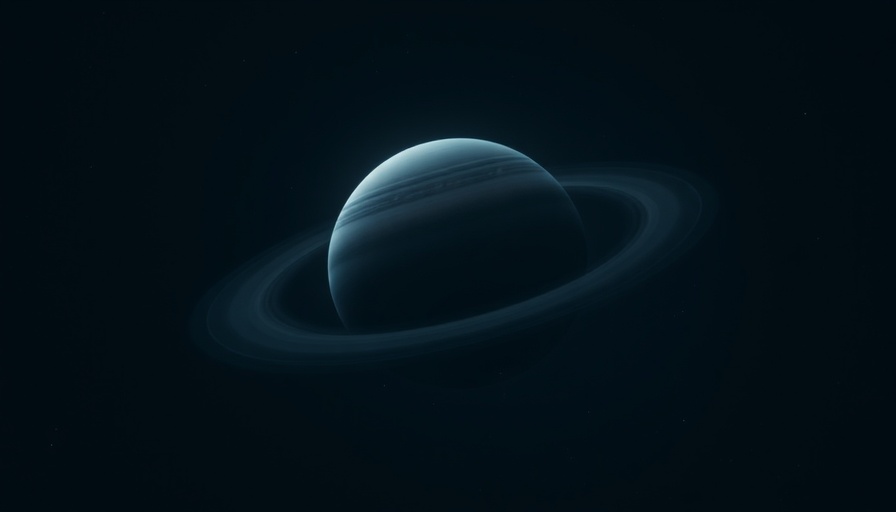
The Revolutionary Method Behind the Precision
An international team of astronomers has achieved a significant breakthrough in understanding Uranus' interior by employing an innovative technique to measure its rotation rate. Led by Laurent Lamy from the Observatoire de Paris-PSL and Aix-Marseille University, the team utilized over a decade of observations from the NASA/ESA Hubble Space Telescope to analyze the planet's auroras—the stunning light displays generated by the interaction of energetic particles in Uranus' magnetic field.
This method allowed researchers to determine that Uranus completes a full rotation in 17 hours, 14 minutes, and 52 seconds. This accurate measurement is a leap from earlier estimates made by NASA's Voyager 2, which had suggested a rotation period 28 seconds shorter. The precision of this new measurement is 1,000 times greater than those from previous studies.
Why This Discovery Matters in Planetary Science
The implications of this discovery extend far beyond just a new number for Uranus’ rotation. Accurate measurements are imperative for planetary research, as they influence our understanding of a planet's magnetic field, atmospheric dynamics, and more. With the new rotation period, scientists can now create a reliable coordinate system to monitor Uranus’ magnetic poles over time, addressing a long-standing gap in our mapping efforts.
Lamy emphasized the importance of their findings, stating that previous coordinate systems based on outdated rotation periods quickly became inaccurate, complicating the tracking of Uranus' magnetic features. The new longitude system not only enhances current models but also serves as a key reference for upcoming missions to Uranus, which have been proposed to study the planet more comprehensively.
Leveraging Hubble's Long-Term Observations
This remarkable discovery was made possible by Hubble's long-term commitment to monitoring Uranus' ultraviolet auroral emissions. Over the years, the satellite has amassed substantial data, which has proven essential for modeling the planet's magnetic field interactions and refining our understanding of its rotational behavior.
Experts agree that continued observation will be vital. As we prepare to launch future missions to Uranus, incorporating Hubble’s findings will be crucial for ensuring that our trajectory aligns with contemporary understandings of the planet's dynamics.
Connecting with Broader Space Exploration Trends
The study of Uranus is a piece of the larger puzzle in space exploration. Efforts like sending probes to the gas giants provide not only insights into our own solar system but also sheds light on how such planets may reside in other star systems. As scientists work on missions to these distant worlds, understanding their distinctive characteristics boosts our knowledge of planetary formation and evolution.
Additionally, advancements in measurement techniques, as demonstrated in this study, highlight the importance of interdisciplinary approaches in astronomy. Collaboration between physicists, astronomers, and engineers continues to drive innovative solutions that enhance observational technologies.
The findings from Uranus offer a glimpse into the future of planetary exploration and underscore the role of high-tech instruments like Hubble in reshaping our understanding of the cosmos.
 Add Row
Add Row  Add
Add 




Write A Comment